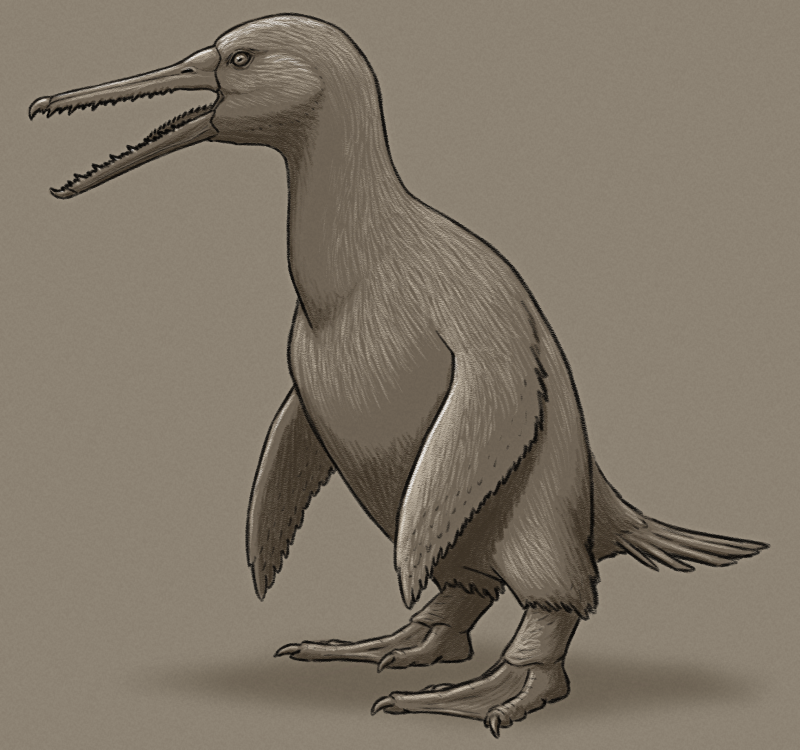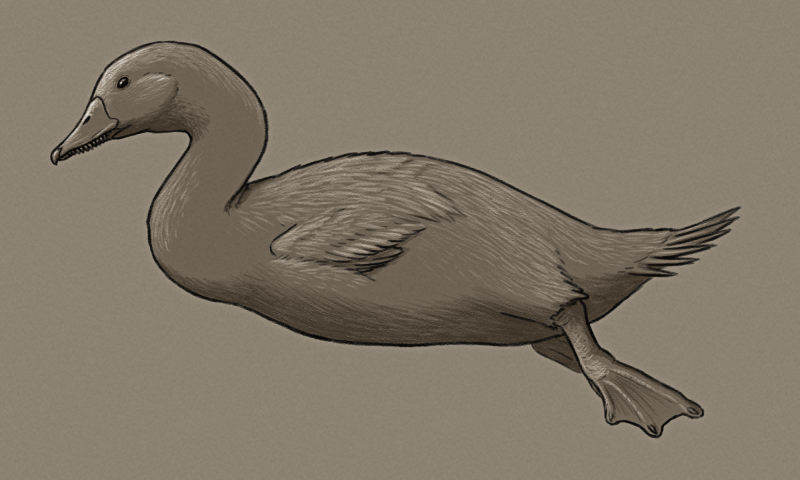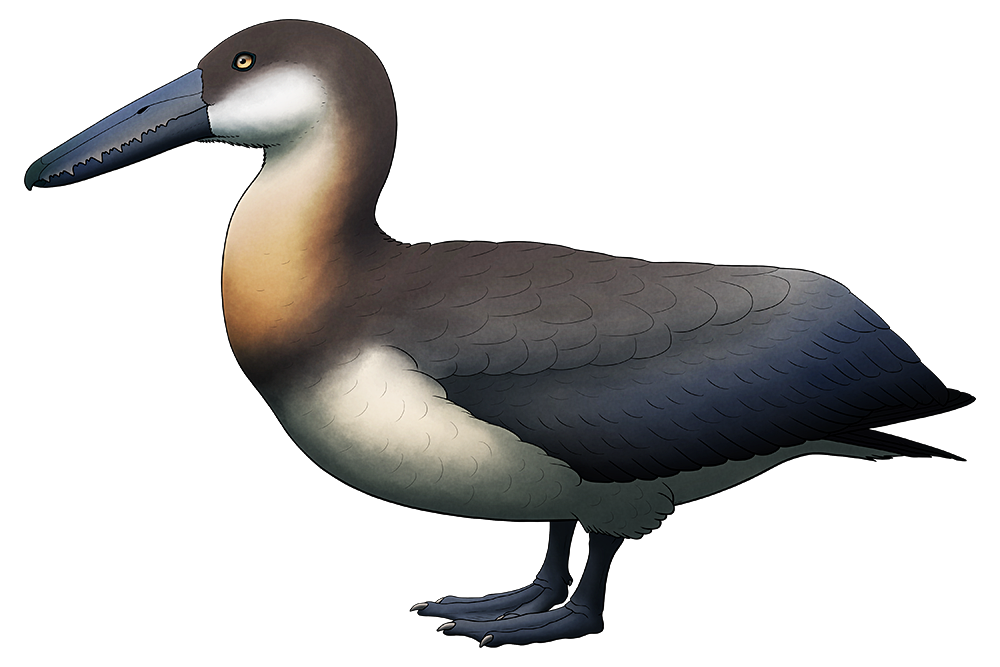An anonymous submitter asked for a “penguin/auk-like relative of Pelagornis“:

Odontopinguinus vomitus represents an unusal early branch of the pelagornithids that didn’t take up long-distance soaring, instead specializing for a pursuit diving lifestyle convergently similar to that of the contemporaneous early penguins, and the later auks and plotopterids.
About 1.2m tall (~4′), it has a more slender spear-like beak than its relatives, with forward-pointing pseudotooth serrations. Like other pelagornithids these “teeth” are fairly fragile, so it feeds primarily on soft-bodied fish and squid, pursuing them underwater with wing-propelled underwater “flight”.
Much like procellariiformes they’re also rather stinky birds, producing musky preen oil and projectile vomiting foul-smelling stomach contents at threats and rivals.
And another anon wanted to see a “big flightless marine duck”:

Thalassonetta anambulatus is descended from the already mostly-flightless steamer ducks. At around 2m long (6’6″) it’s massive for a waterfowl, with vestigial wings and large webbed feet used to propel itself while diving.
With its rather elongated and heavy body and loon-like leg configuration it’s no longer able to walk on land – and it’s actually almost fully aquatic, only awkwardly hauling out into isolated island beaches to molt and breed.
It feeds mainly on molluscs, crustaceans, and other marine invertebrates, using the large lamellae in its bill to strain them out of soft seafloor sediments.


